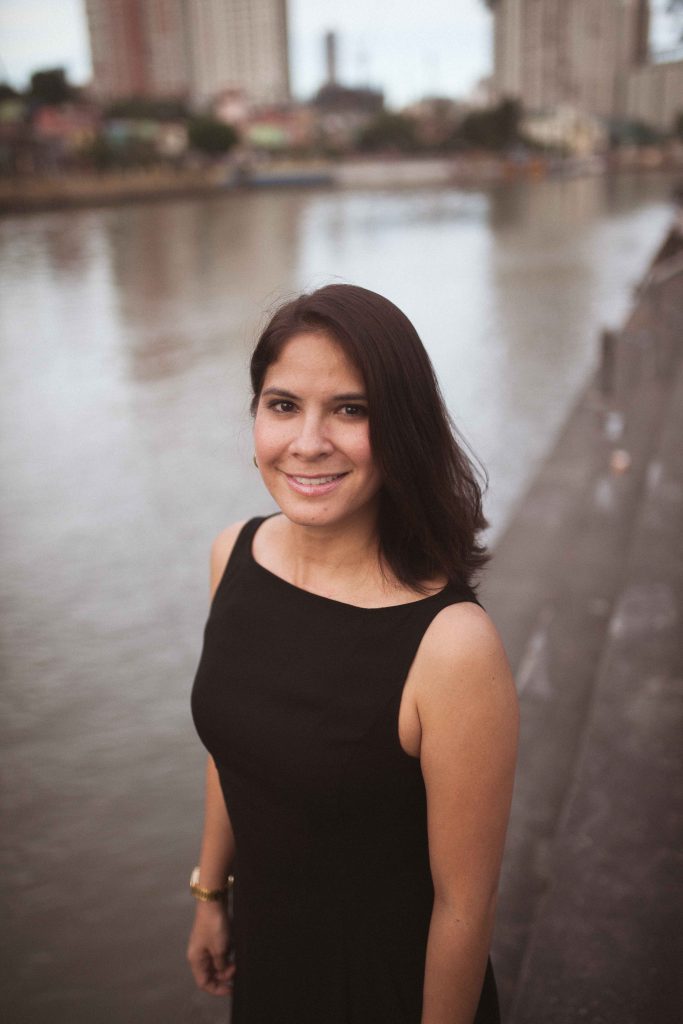“Traffic is our biggest problem now, but in the future, it will be something else,” says Julia Nebrija, urban planner and Metro Manila Development Authority’s assistant general manager for operations. “Cities are always evolving, and the process is never finished.”
Traffic is the bane of every city dweller’s existence, given the time, energy, and money it costs us to get from one place to another, and Nebrija is no stranger to this daily struggle. Two years ago, she rode a bicycle around Metro Manila. Now that she works in the government, she commutes or walks to work just like everybody else. With her current responsibilities, she has a wider view of what else needs to be addressed to make living in Manila more convenient, and what it would take to bring their plans to fruition.
Why did you pick this location for this shoot?
Even before I started working with MMDA, I was already very fascinated by the Pasig River. Our urban history starts from the river. Intramuros, the old city of Manila, is at the mouth of Manila Bay. Culturally, we are people of the water, and environmentally, when you are by the river, you see big, beautiful trees and birds. It’s a really peaceful place to be. I believe that the Pasig River is our last urban frontier. There’s nothing else like it, so I’m really passionate about letting other people know about it, appreciate it, and eventually work towards reviving it to be the central piece that brings together a lot of things in our city and even define Metro Manila itself.
The Pasig River is what all of my efforts somehow come back to because in operations, we deal with flood management, solid waste management, environmental protection, traffic, and transport. Almost all of our mandates intersect somehow in the water. It’s a very symbolic place for me and represents how I feel about the city, and where I hope the city is going at the same time.

[blockquote author=”Julia Nebrija” pull=”center”] “We have to do something where we both inspire people to change and, at the same time, give them concrete plans on how to do it.” [/blockquote]
Are there any future projects that will involve the Pasig River?
Not just the Pasig River, but also the esteros. We were able to get signed the Metro Manila council agreement that all legal easements of waterways should be prioritized as public spaces and thoroughfares for non-motorized transport. Now, we’re looking at reclaiming alignments on esteros as well as parts of Pasig River to become public spaces and also as pathways for people. That’s definitely something we’re working on, and we’ll see that progress in the next year and a half. There’s also the improvement of the ferry service and the addition of more terminals and more bridges across Pasig River, even extending the ferry service to Marikina, Laguna Bay, and Manila Bay.
Where do we actually start solving the problem?
On a daily basis, we figure out what we can do now, today. We have to do something where we both inspire people to change and, at the same time, give them concrete plans on how to do it.
Every day is a balance of ideas and actions from the top down and from the bottom up. Some days, we’re thinking more on a top-down model, some days it’s extremely bottom-up: physically going to bus terminals and doing inspection, talking to street-sweepers, inspecting pumping stations. We zoom in and zoom out all at the same time, trying to get everything aligned.
Did your perspective change from before you were simply an advocate to now that you’re in office?
It has changed in the sense that I have realized a bigger disconnect. Working with an NGO, I had thought that our voice was very strong. But now that I’m on the other side, I feel like advocates are not nearly as loud as the car users, those with special interests, the commuters, etc. These people are a lot louder, but they’re more about protecting the kind of city they want to keep, instead of trying to think of alternative solutions or think of a different vision for the city. We need to have a stronger civil society and more representations on certain issues.
But otherwise, regarding my perspective on the issues themselves, they’re as complicated as I had thought they would be. I am hopeful that as I am working from the inside, as I’m able to meet a lot of people that I had wanted to meet while I was still on the outside, we can work together to get things done.
There’s a lot more pressure now, and I didn’t think it would become easier once I get into office. I definitely feel the difference between the responsibility of being an advocate who says how things should happen, and the responsibility of being the one in charge to actually make them happen. It gives me a whole new drive and really lights a fire in me. It gets me moving in a different way, other than writing articles or writing letters to a senator. I have to carry ideas through from A to Z, and figure out how to make them a reality—and that’s a really good challenge. It’s a challenge our office plans to succeed in.
This story was originally published in Southern Living, March 2017.